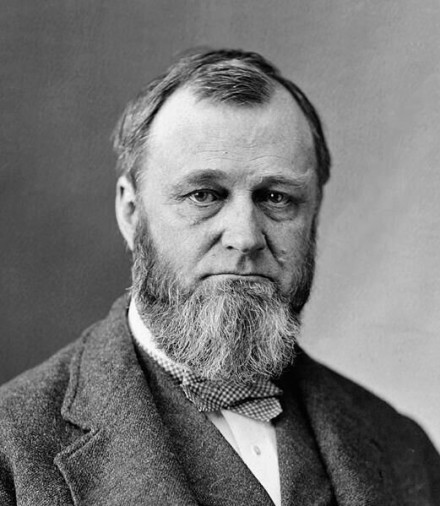
Spencer Fullerton Baird
February 3, 1823 - August 19, 1887Born on February 3, 1823 in Reading, Pennsylvania, Spencer Fullerton Baird is best known as a naturalist, herpetologist, ornithologist, ichthyologist and museum curator. He was introduced to the natural world at an early age by his father and brother. Before Baird’s father’s death, they would garden and go on walks together. Baird’s brother, William, a birder, spent time teaching Spencer various birds in the field. Baird published over 1,000 works and became the first curator of the Smithsonian Institution, dedicating himself to expanding the natural history collections of the museum.
Baird attended Dickinson College in Carlisle, Pennsylvania and earned both his B.S. and M.A. degrees from the institution. In 1840, he moved to New York City to study medicine, returning to Carlisle two years later to teach natural history at Dickinson College. Through extensive research, frequent travel, collecting trips and exchanges of specimens with other naturalists, Baird eventually received a grant from the Smithsonian Institution in 1848 to explore bone caves and the natural history of southeastern Pennsylvania. He received another grant a year later to collect, pack and transport specimens for them, meeting Smithsonian Secretary Joseph Henry in the process. The two became close friends and colleagues, and in 1850, Baird became the first curator at the Smithsonian.
During his time as curator, Baird created a museum program allowing for a stronger focus on the natural history of the United States. This program helped expand the network of collectors. He described over 50 new species of reptiles with his student, Charles Frederic Girard, and the snake collection at the museum became a benchmark work in North American herpetology.
After serving as curator for the Smithsonian, Baird became the Assistant Secretary under his friend Joseph Henry. As Assistant Secretary, Baird helped develop a journal and publication exchange, designed to help scientists access journals that were difficult to obtain. He and Henry also worked together to provide scientific equipment to the US and Mexican Boundary Survey.
After vacationing in Woods Hole, Massachusetts in 1870, Baird developed an interest in maritime research and began leading research expeditions to New England and Nova Scotia. He was appointed Commissioner of Fish and Fisheries for the US Fish Commission by Ulysses S. Grant in 1871. During his time as commissioner, he worked to replenish the salmon and other food fish supplies in rivers and lakes, pushing to limit human impact on fish populations. He determined that human influence was to blame for the decline in the fish population in coastal areas and had a major influence in developing fishing and fishery policies for the country.
Baird was the primary writer of A History of North American Birds, published in 1874, which remains an important work in ornithology. After Henry’s death in 1878, Baird succeeded him as Secretary of the Smithsonian Institution and in addition served as the first Director for National Museum.
